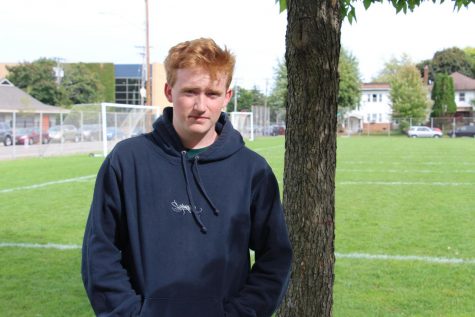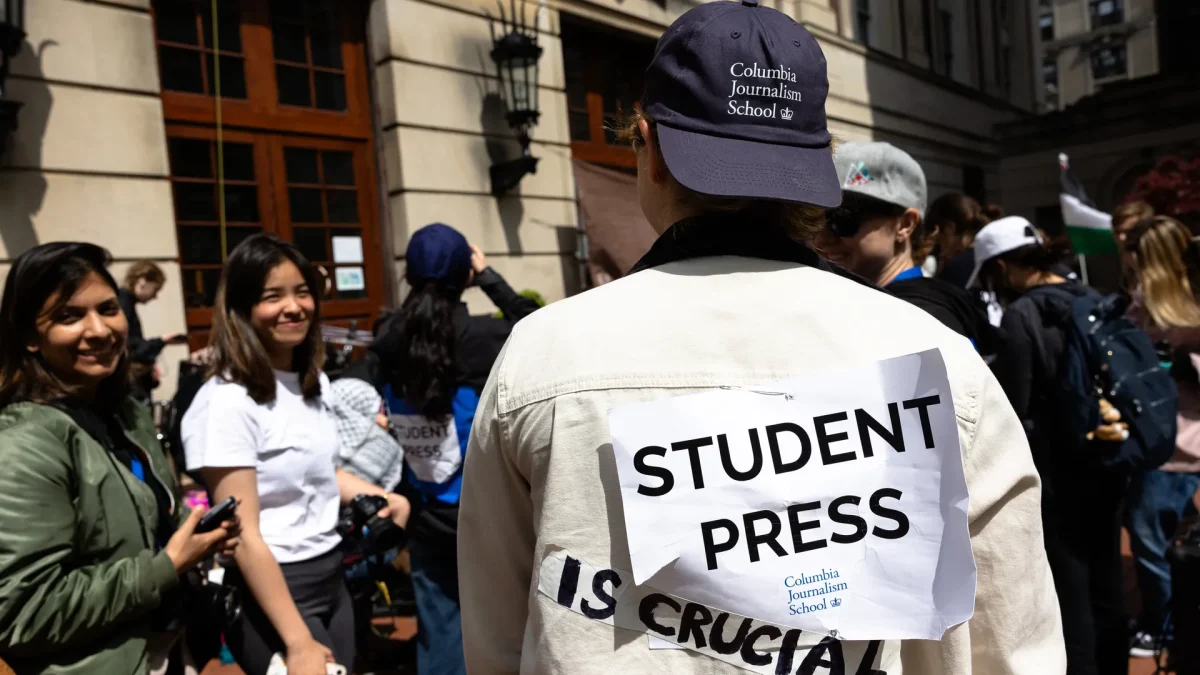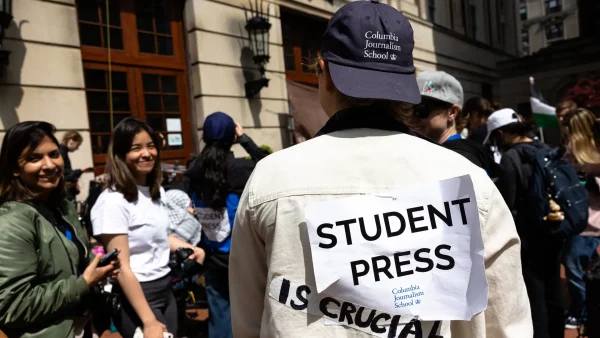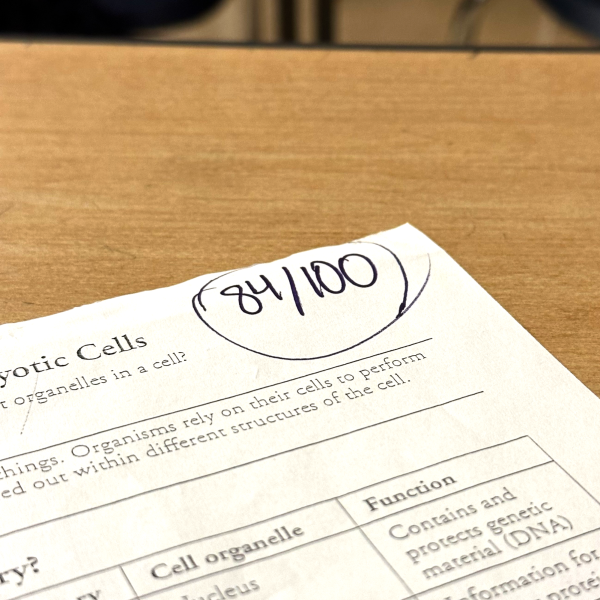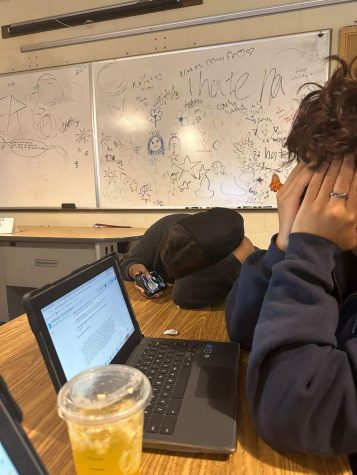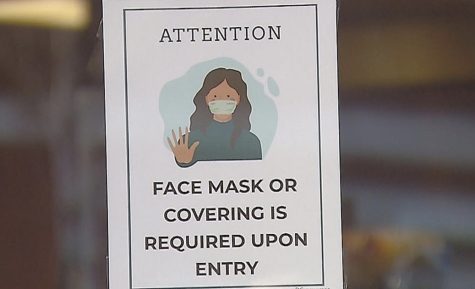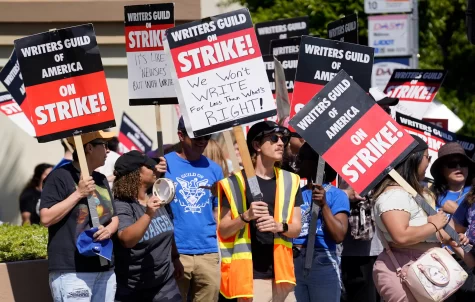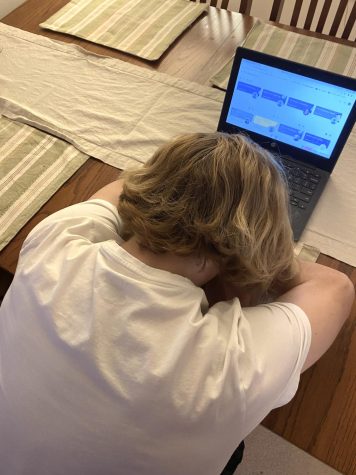Trigger warnings are an important tool for learning
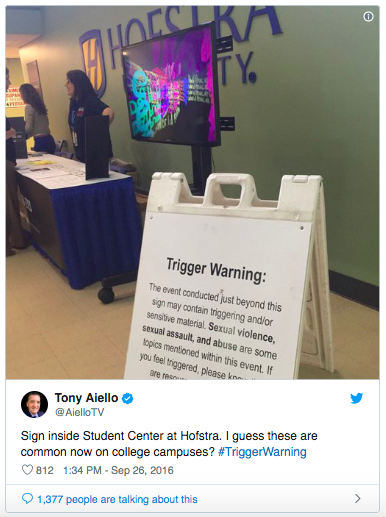
A tweet shared in 2016 by news influencer Tony Aiello critiques the use of a trigger warning outside one of the first presidential debates at Hofstra University. The tweet presents trigger warnings in a demeaning way, delegitimizing mental health struggles in a way that is insensitive and immoral. Trigger warnings are important because they maintain mental and physical safety of the public and when used correctly in no way threaten free speech or political discourse like Aiello infers.
May 16, 2019
When it comes to societal behavior norms, our society has become more open to accepting other people’s differences and experiences. An obvious example of this is with trigger warnings. We have approached the idea of general required warnings for traumatizing material relating to mental health struggles, sexual assault, and race-based hate crimes throughout history. Trigger warnings in no way threaten free speech, they serve only to increase comfort and livability for those affected by trauma or other mental health struggles.
Trigger warnings serve one and only one purpose: to notify and alert people of impending possibly traumatic content in media, classrooms, news and other platforms — specifically in high schools and college campuses. They often take the form of short messages such as “viewer discretion advised” or “contains violence or sexual imagery that may be inappropriate.” In order to ensure mental and physical safety when viewing possibly traumatic content, trigger warnings must become standardized within our society. “I think that America doesn’t really care… people without mental illnesses use the term ‘trigger’ in illegitimate ways which delegitimize people with real triggers and in media that contains for instance sexual assault triggers it can really harm people” said sophomore Isra Hirsi.
Trigger warnings are a tool to help students gauge whether or not something is suitable for their mental health based off past trauma that they or a loved one may have experienced. For example, within South we must use trigger warnings when we talk about racial violence. South has one of the largest populations of students of color in the city, so South has a larger group of students who could be potentially affected by content related to historical or current racism. We should especially mindful of the use of the n-word by non-black people.
“The experiences I’ve had with the [n-word]… definitely made me uncomfortable [even if] I don’t know if I’d call it a trigger,” said Hirsi. South teachers and students need to take student views of this word into account to ensure the comfort and safety that should be paramount in the learning process.
Despite the importance of trigger warnings, the word “trigger” is often misused. It has become a very politically charged term, since it was first used by leftist feminists, mental health advocates, and racial justice activists. Therefore, stereotypes about the term have been blown out of proportion because many people think leftists are taking advantage of the term and using it as a tool to shut down opposing opinions.
Many conservatives argue that trigger warnings stifle free speech. They often think that leftists will use “trigger warnings” to excuse themselves from listening to conservative opinions. Yet trigger warnings are not supposed to be used to censor political views. “The argument is sort of stupid because it doesn’t take into consideration what the real reason behind them is,” said Truong.
In reality, trigger warnings aren’t about politics at all. “I think that mental health concerns are what is truly at the core of the issue rather than the misuse of the term” said junior Philip Truong.
Trigger warnings are also commonly made fun of. There are many memes about trigger warnings that say things such as “I heard you like trigger warnings, so I put a trigger warning on your trigger warning so you can be triggered while you get triggered.” This satire is also often used to delegitimize leftists, but the reality is that it marginalizes people who have had traumatic experiences and need trigger warnings.
“I think it isn’t too hard to warn people about things like sexual assault or other things that make people uncomfortable without stifling free speech… it’s a courtesy to make people who have mental illness comfortable,” said Hirsi.
Even studies conducted at respectable universities have generally concluded that trigger warnings are useless, Studies done by research universities are generally conducted by showing two groups of students traumatic content, including a trigger warnings for only one group. Yet the students aren’t given the option to leave the room before the traumatic content is shown, and therefore the studies don’t really prove anything. The studies conclude that the level of unease between the two student groups is the same after viewing the content, but it’s easy for students to hide their feelings if they are being forced into a certain situation. The point of trigger warnings is to allow students to decide themselves whether they need to leave or not.
The entire point of trigger warnings are just that, a warning! They give students the option to leave or to remain in the classroom and view the content based on their own preferences and experiences. The point is not to neutralize or dial down the trauma just by warning students of what they are about to see they are meant as an out for individuals who will be negatively affected by the content to take in order to preserve their mental health. In now way harming anyone and in no way stifling anyone’s right to free speech.

